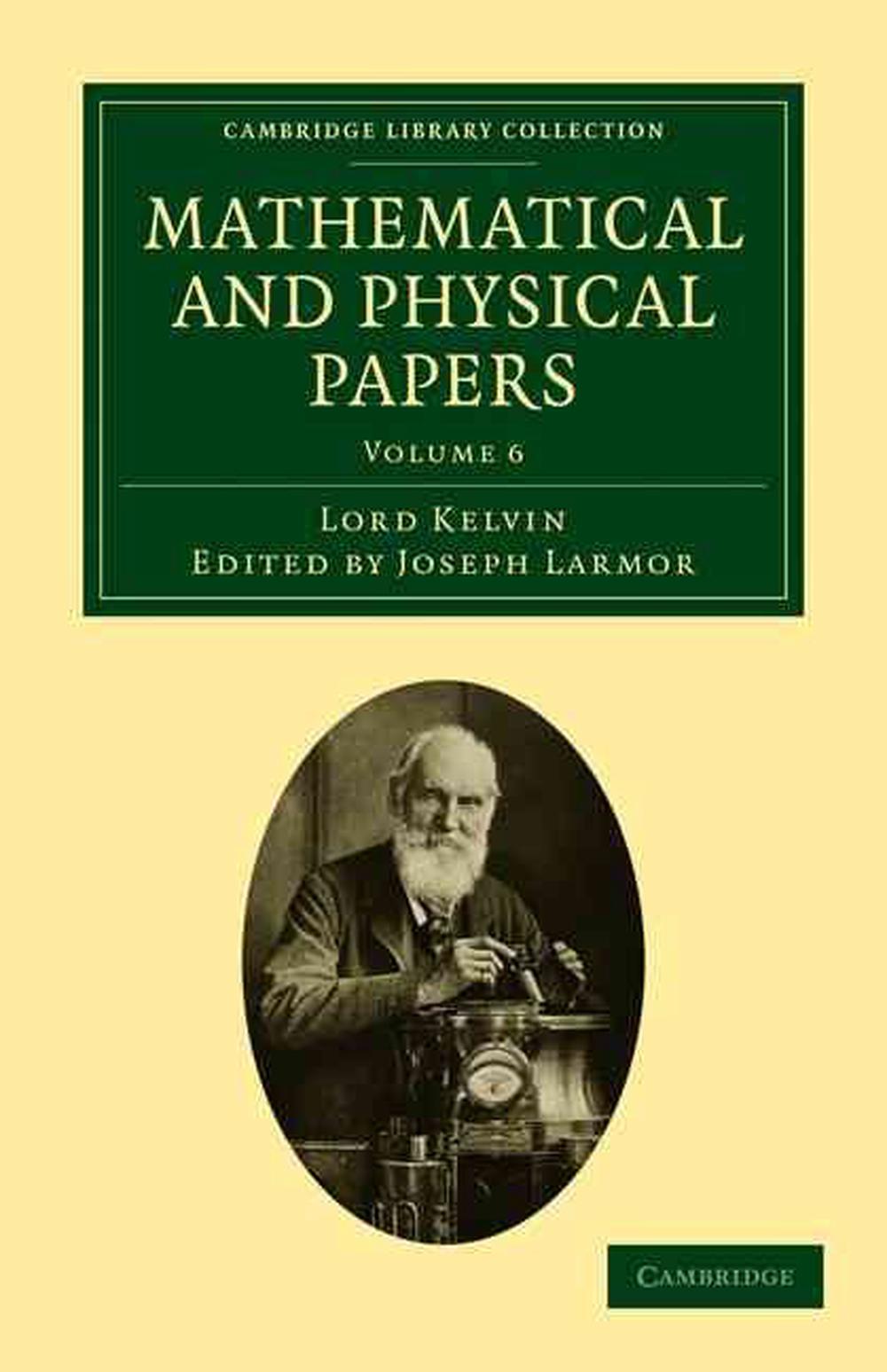
Mathematical and Physical Papers
by William Thomson, Sir Joseph Larmor
This collection brings together in six volumes the published articles of the eminent mathematical physicist and engineer William Thomson, first Baron Kelvin (1824–1907). Topics covered include heat, electricity, magnetism and electrotelegraphy, hydrodynamics, tidal theory and navigation.
Paperback
English
Brand New
Publisher Description
William Thomson, first Baron Kelvin (1824–1907), is best known for devising the Kelvin scale of absolute temperature and for his work on the first and second laws of thermodynamics, though throughout his 53-year career as a mathematical physicist and engineer at the University of Glasgow he investigated a wide range of scientific questions in areas ranging from geology to transatlantic telegraph cables. The extent of his work is revealed in the six volumes of his Mathematical and Physical Papers, published from 1882 until 1911, consisting of articles that appeared in scientific periodicals from 1841 onwards. Volume 6, published in 1911, includes articles from the period 1867–1907. The chapters in the first part of the work focus on voltaic theory and radioactivity, while later ones examine navigation and tides.
Author Biography
William Thomson is Professor of Economics at the University of Rochester, New York.
Table of Contents
Voltaic Theory, Radioactivity, Electrions: 234. On Volta-convection by flame; 235. Electrification of air by flame; 236. On the velocity of Crookes' cathode stream; 237. On the electrification of air; 238. Preliminary experiments to find if subtraction of water from air electrifies it; 239. Electrification of air and other gases by bubbling through water and other liquids; 240. On the diselectrification of air; 241. On the electrification of air; 242. On the electrification and diselectrification of air and other gases; 243. On the generation of longitudinal waves in ether; 244. On Lippmann's colour photography with obliquely incident light; 245. On measurements of electric currents through air at different densities down to one five-millionth of the density of ordinary air; 246. On the communication of electricity from electrified steam to air; 247. Experiments on the electrical phenomena produced in gases by Röntgen rays, by ultra-violet light, and by uranium; 248. Continuation of experiments on electric properties of uranium; 249. On electrical properties of fumes proceeding from flames and burning charcoal; 250. Contact electricity of metals; 251. Note to 'The electrification of air by uranium and its compounds'; 252. Electrification of air, of vapour of water, and of other gases; 253. Leakage from electrified metal plates and points placed above and below uninsulated flames; 254. Nineteenth century clouds over the dynamical theory of heat and light; 255. On the motion produced in an infinite elastic solid by the motion through the space occupied by it of a body acting on it only by attraction or repulsion; 256. On the duties of ether for electricity and magnetism; 257. Aepinus atomized; 258. Becquerel rays and radioactivity; 259. Contribution to B.A. discussion on the nature of the emanations from radium; 260. On the destruction of cambric by radium emanations; 261. Electrical insulation in 'vacuum'; 262. Plan of a combination of atoms having the properties of polonium or radium; 263. On the statistical kinetic equilibrium of ether in ponderable matter at any temperature; 264. Plan of an atom to be capable of storing an electrion with enormous energy for radioactivity; 265. An attempt to explain the radioactivity of radium; 266. On the motions of ether produced by collisions of atoms or molecules, containing or not containing electrions; Navigations and Tides: 267. On the determination of a ship's place from observations of altitude; 268. Amended rule for working out Sumner's method of finding a ship's place; 269. On a septum permeable to water and impermeable to air, with practical applications to a navigational depth-gauge; 270. On the new navigational sounding machine and depth-gauge; 271. The tide gauge, tidal harmonic analyser, and tide predicter; Miscellaneous: 272. Archibald Smith, and the magnetism of ships; 273. H. C. Fleeming Jenkin; 274. The scientific work of Sir George Stokes [Obituary notice]; 275. James Watt; 276. Peter Guthrie Tait; 277. Address as Chancellor at Glasgow; Index.
Promotional
A six-volume collection of the scientific papers of Lord Kelvin (1824–1907), one of Britain's most eminent mathematical physicists.
Promotional "Headline"
A six-volume collection of the scientific papers of Lord Kelvin (1824-1907), one of Britain's most eminent mathematical physicists.
Description for Bookstore
This collection brings together in six volumes the published articles of the eminent mathematical physicist and engineer William Thomson, first Baron Kelvin (1824-1907). Topics covered include heat, electricity, magnetism and electrotelegraphy, hydrodynamics, tidal theory and navigation.
Description for Library
This collection brings together in six volumes the published articles of the eminent mathematical physicist and engineer William Thomson, first Baron Kelvin (1824-1907). Topics covered include heat, electricity, magnetism and electrotelegraphy, hydrodynamics, tidal theory and navigation.
Details

